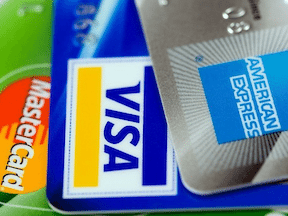In “American Express OptBlue Program May Reduce Processing Cost,” my article last month, I explained American Express’s new program called OptBlue. This program should lower the American Express processing cost for thousands of ecommerce, retail, and other merchants in the U.S. The OptBlue program allows the merchant account provider to set the rates and fees merchants pay, in a similar way that merchant account providers set the rates and fees for Visa, MasterCard, and Discover.
American Express has done a good job of implementing a straight forward pricing structure that is far less complicated than those implemented by Visa, MasterCard, and Discover. However, despite the program’s simplicity, I fear some providers will mislead merchants or charge uncompetitive rates and fees. The purpose of this article, therefore, is to offer important information to ecommerce merchants, to ensure they are not being misled or gouged by their provider.
American Express has done a good job of implementing a straight forward pricing structure that is far less complicated than those implemented by Visa, MasterCard, and Discover.
OptBlue Basics
American Express provides wholesale pricing to merchant account providers. This pricing differs by industry. For example, the retail wholesale rates are lower than the ecommerce wholesale rates. There are only three wholesale rates for each industry type and the rates are based on the individual sale amount. American Express also charges the providers a “network fee” and an additional fee for card-not-present transactions and international cards, which the providers should pass through to merchants without mark-up. However, some providers may mark up these fees as they do for the other card companies.
To ensure your company is obtaining fair rates and fees on it OptBlue program, follow these two steps.
Step 1. Ensure the Wholesale Rates and Fees Quoted Are Correct
To ensure that ecommerce merchants are not quoted inflated wholesale rates by providers, note the following.
- Ecommerce merchants. The three ecommerce wholesale rates are set for individual transactions of $150 or less, $150.01 to $3,000, and above $3,000.
For a sale of $150 or less, the combination of the wholesale rate, the network fee, and the card-not-present fee should not exceed 2.15 percent + $0.10. The combination should not exceed 2.50 percent + $0.10 for a transaction of $150.01 to $3,000. For a sale larger than $3,000, the combination should not exceed 2.95 percent + $0.10.
- Most retail merchants. The three wholesale rates for most retail merchants are set for transactions of $75 or less, $75.01 to $1,000, and transactions above $1,000.
For a transaction of $75 or less, the combination of the wholesale rate and the network fee should not exceed 1.75 percent + $0.10. The combination should not exceed 2.10 percent + $0.10 for a sale of $75.01 – $1,000. For a sale larger than $1,000, the combination should not exceed 2.55 percent + $0.10.
I did not include the card-not-present rate for retail merchants because the majority of sales are generally swiped. However, retail merchants will pay a card-not-present fee on transactions that are not swiped.
When a provider or salesperson quotes American Express pricing, first have it list all three wholesale rates, the network fee, and the card-not-present fee separately. If the combination of rates and fees mentioned above add up to more than the above mentioned figures, then the provider is inflating one or all of the rates and fees. Should this happen, research other providers.
Step 2: Monitor American Express Rates Closely
Many providers and their salespeople know that merchants have an ingrained belief that American Express costs more. Therefore, some providers and salespeople will try to take advantage of that belief. In fact, I have already seen it. A ecommerce merchant recently sent me a quote that had Visa and MasterCard pricing at 0.04 percent + 4 cents over interchange and pass-through fees. However, the American Express OptBlue pricing was set at 0.55 percent + 4 cents over American Express rates and fees. The provider marked up the American Express percentage almost 14 times more than Visa and MasterCard. Why? Because this provider knows that merchants don’t understand the OptBlue program. Providers also know that merchants in general believe that American Express comes at a higher cost.
American Express did not introduce the OptBlue program so that providers could offer even lower Visa and MasterCard rates by subsidizing them with higher American Express rates. Merchants must start looking at their American Express rates and fees. If the Visa and MasterCard transaction fee is 5 cents then there is no reason why the American Express transaction fee should be higher than 5 cents. If the provider mark-up for Visa and MasterCard is 0.04 percent + 4 cents, then the mark-up for American Express should not be any higher than 0.04 percent + 4 cents. Don’t let the provider tell you the American Express rate is higher than Visa and MasterCard because its volume is lower. Providers generally price Discover at the same markup as Visa and MasterCard and its volume may very well be lower than the American Express volume at your business.
In my article next month, I’ll explain how to compare your current American Express costs with the OptBlue costs, so you can determine the savings.
See the next installment of our OptBlue series, at “American Express OptBlue: Negotiating Processing Rates.”




